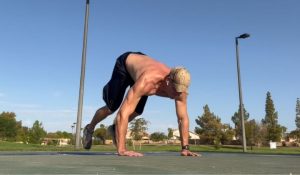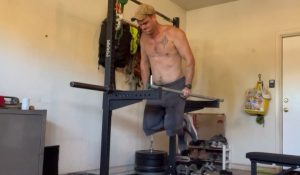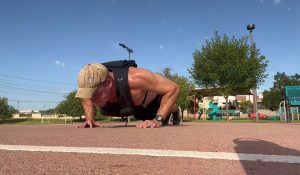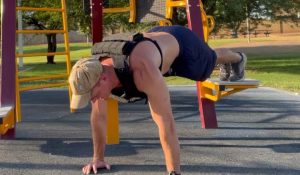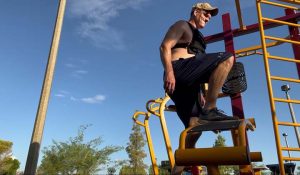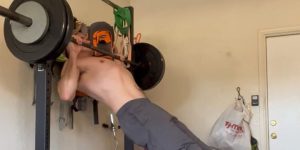We’ve all experienced it: the dull ache in a muscle one or two days after a tough workout. When we’re new, most of us conflate muscle soreness with muscle growth, or workout quality – often chasing soreness or feeling that lack of soreness means a workout wasn’t “good”. Is this really true? Let’s examine what the literature has to say about muscle soreness as it relates to growth:
Muscle soreness is not a good indicator of muscle growth, because though muscle soreness often occurs periodically during muscle-building activities, soreness, and muscle growth are not well correlated. What’s more likely is that soreness is a result of a novel stimulus, such as changing an exercise or training program, and will subside as the program goes on.
Therefore, it is misguided to equate muscle soreness with workout quality. In fact, one of the hallmarks of someone who’s experienced is often that they do not conflate the two. Rather, they know how to use muscle soreness as an indication of certain nuances in their exercise program.
Soreness and muscle growth are poorly correlated
As noted above, muscle soreness isn’t truly necessary to achieve muscle growth. Conversely, the absence of muscle soreness from a given workout or training program doesn’t necessarily mean the session wasn’t productive.
Take for instance some of the studies that show certain muscles seem less prone to perceived muscle soreness than others, but still experience growth through high-volume training.
Also consider studies that show muscle soreness is a common result of long-distance (endurance) training, though we know this style of training is extremely unlikely to lead to muscle growth unless the trainee is extremely undertrained, to begin with.
All of this isn’t to say that muscle soreness means nothing – it’s simply to point out that using muscle soreness as an indicator of whether or not a workout was “good” is misguided.
Now that we know what muscle soreness doesn’t mean, let’s take a look at what it does mean and some potential benefits:
What soreness actually means
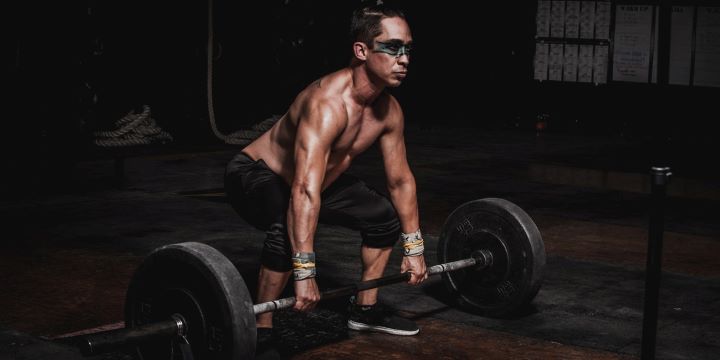
What most of us call “muscle soreness” is referred to in the scientific literature as Delayed Onset Muscle Soreness (DOMS). DOMS is a feeling in the muscle created by microscopic tears in the tissue as a response to certain lifting sessions or workouts. We do know when it occurs:
Novel Stimulus
In many cases, soreness is a response to a novel stimulus. This is why even short micro workouts can get us really sore if we’re not used to them. his phenomenon is documented in the literature and was referred to in one study as unaccustomed physical activity.
This means that we got sore because we engaged in an activity that we normally don’t – either doing an exercise that is not in our normal repertoire or by changing the parameters of an exercise such that we’ve introduced a stimulus our body isn’t used to.
You can try this in your next session if you’re interested in testing it out. For instance, if you’re accustomed to doing a close grip bench every week, try changing the exercise slightly. OR, swap one exercise for another, similar exercise (switching out a push-ups finisher for dips, for instance). This may be achieved by doing a close grip incline, or a wide grip bench. The novel stimulus is almost certain to create soreness.
What’s more is if you stuck with the new exercise for a few weeks, you’d stop getting sore, because the exercise would no longer be novel. You’d also likely get sore again if you switched back to the original exercise.
Muscle Damage
Studies show that muscle soreness is an indication that muscle damage (or micro-tearing) has occurred. It is even theorized that muscle tears cause DOMS (although we still aren’t 100% sure about this), replacing the outdated theory that muscle soreness was caused by a buildup of lactic acid (more specifically, lactate) in the muscles.
This is a useful bit of information for us since muscle damage is one of the three main mechanisms of muscle growth (as laid out by researcher Brad Schoenfeld here) However, the inverse isn’t necessarily true: just because we didn’t get sore, doesn’t mean that muscle damage didn’t occur.
Also, note the fact that muscle damage alone doesn’t necessarily equate with muscle growth. Consider the case of a long-distance bike rider, hiker, or runner who gets very sore after a long, hard effort. This athlete likely created a lot of muscle damage during their effort, but we also know that hypertrophy is not likely to result from long-distance effort.
Eccentric Loading
DOMS is also particularly accentuated by exercises that have quite a high eccentric loading component, especially if they’ve got a longer range of motion. The eccentric portion of a lift or exercise is the one in which the muscle is stretching under load. In practical terms, this generally means the lowering portion of the exercise.
Exercises that have a strength curve such that the resistance increases as we go down (such as a stiff-legged deadlift or preacher curl) tend to create more muscle soreness than exercises in which the resistance decreases as we go down (such as a lateral raise or barbell row).
This also explains why some people have concluded that they “can’t” get sore in certain small muscles, like the deltoids. Generally, this is related more to exercise selection than the muscle in question.
How Muscle Soreness can be Useful

There can be a tendency to throw the baby out with the bathwater upon learning that muscle soreness doesn’t indicate growth or that a workout was good. However, the point of this article isn’t necessarily to say that we should avoid soreness altogether. Rather, it’s to say that gauging our progress and/or relative productiveness by soreness is likely misguided. That being said, there are a handful of positive uses for muscle soreness:
Soreness is a way to know if muscle damage occurred
As noted above, soreness is a surefire indication that muscle damage has occurred, and in which muscles. Since muscle damage is one of the three main mechanisms of muscle growth, a little soreness after a hard session can be a good indication that we succeeded in achieving at least one of the three mechanisms of hypertrophy.
Soreness can indicate if the target muscle was actually worked
Soreness can also be an indication of which muscle received the brunt of the workload during a given session. For instance, if you complete a hard session of weighted dips in an attempt to target your chest, and the next day your front delts are sore to the touch, it’s a possible indication that the actual target muscle wasn’t stimulated properly. Conversely, if you complete a hard session of weighted dips and your chest is sore the next day, it’s a good indication that your mind-muscle connection and exercise selection were on-point.
What to do with this information
So, does muscle soreness mean growth? Not really. But now you’re armed with some actionable information. Now that you know that muscle soreness doesn’t necessarily mean a workout was good or bad, you can use any future soreness as a tool in your arsenal to gauge how your overall program is going:
If you try a new exercise and the “wrong” muscles get sore, then work on your mind-muscle connection, change the angle of the exercise, or switch to a different exercise next time.
If you get excessively sore (soreness lasting longer than about 48 hours), it can be a good time to skip a workout and work back up to the volume over the course of a couple of weeks.
If you stick with evidence-based recommendations for muscle growth and don’t feel sore at all, don’t worry about it, because it probably doesn’t matter.






